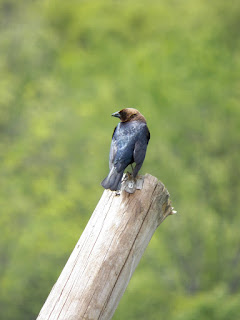1. There's something deeply significant about the concept of setting aside natural and cultural resources as public lands held trust for the everyone to enjoy. National Parks provide beautiful spaces for recreation in the now and preserve them for future generations; countries that establish them are able to look at the environment beyond the short-term possible benefits and see the bigger picture of the importance of preservation. Ken Burns has made famous historian Wallace Stenger's quote:
"National parks are the best idea we ever had. Absolutely American, absolutely democratic, they reflect us at our best rather than our worst."
2. National Parks are incredibly beautiful. Google the phrase "national parks slideshow" and you will be treated to some amazing images of the beauty that awaits you. Some of it is wilderness, remote and difficult to access; many more sites are easier to visit, and more rewarding, than you may think.
3. National Parks are cheap to visit, especially if you're willing to rough it. An annual National Park Pass-called the America the Beautiful pass-costs $80 and gets you and all the passengers in your car into participating parks for an entire year! If you're only going to visit one park, most charge around $20 per car for an entire week! And campsites run around $20-30 a night in the parks, with great reservation systems online for more popular spots.
4. National Parks give you the chance to experience a different quality of life, if only for a little while. They can expand your horizons and give you an inkling of a different you that is possible. At the Eielson Visitor Center at Denali National Park last summer, there was a lull in the shuttle bus traffic, and I was able to sit at a table and contemplate Denali, in all its snow-capped grandeur, basically alone for a moment, just me, my rice cakes and the mountain.
In that moment, I began to understand the lure of the back-country. Yes it's remote and inconvenient and possibly dangerous. But it's also peaceful, tranquil and quiet, a place where you can go for solitude and reflection. Be a different (and arguably better) you, even if it's just for a few days. Your experience will slowly creep inside you and change you.
5. National Parks are everywhere! There are 394 different properties in the NPS system, comprising over 84 million acres. And the Park Service publishes a nifty "passport" that you can take to each site and have stamped with the date of your visit and the name of the park (for free, once you pay $8 for the booklet). Go today and visit one. You'll be glad you did!
My List: This summer, I'm going to have the opportunity to visit many, many NPS sites. (This post actually came about because I was trying to count exactly how many stamps I'll be getting-the geek in me like to quantify things). In fact, my list could be categorized as ambitious. Some sites end up in the "been there, saw that, glad I went but never again" category, while others go straight to the top of my "camp here for a month with my RV when I'm old and retired" pile.
So here's my list-as you read it, start thinking about yours:
- Ft. Sumter National Historic Site, Charleston, SC
- Biscayne National Park, Homestead, FL
- Everglades National Park, Homestead, FL
- Gulf Islands National Seashore, near Pensecola, FL
- Jean Lafitte National Historic Park and Preserve, New Orleans, LA
- New Orleans Jazz National Historic Park, New Orleans, LA
- Great Smokey Mountains National Park, Gatlinburg, TN
- Cuyahoga Valley National Park, near Cleveland, OH
- Sleeping Bear Dunes National Lakeshore, Empire City, MI
- Pictured Rocks National Lakeshore, Munising, MI
- Knife River Indian Villages National Historic Site, Stanton, ND
- Theodore Roosevelt National Park, Medora, ND
- Yellowstone National Park, northwest WY
- Grand Teton National Park, near Jackson, WY
- Rocky Mountain National Park, Estes Park, CO
- Arches National Park, Moab, UT
- Canyonlands National Park, Moab, UT
- Mesa Verde National Park, Cortes, CO
- Canyon du Chelly National Monument, Chinle, AZ
- Petrified Forest National Park, Holbrook, AZ
- Sunset Crater Volcano National Monument, near Flagstaff, AZ
- Wupatki National Monument, near Flagstaff, AZ
- Grand Canyon National Park, Tusayan, AZ (north & south rims)
- Joshua Tree National Park, Twentynine Palms, CA
- Channel Islands National Park, Ventura, CA
- Sequoia and Kings Canyon National Parks, Three Rivers, CA
- Yosemite National Park, Yosemite Valley, CA
- Death Valley National Park, Death Valley, CA
- Zion National Park, Springdale, UT
- Hubbell Trading Post National Historic Site, Ganado, AZ
- El Morro National Monument, Grants, NM
- Pecos Bill National Historic Site, Santa Fe, NM
- Ft. Smith National Historic Site, Ft. Smith, AR
- Kansas Tallgrass Prairie National Preserve, Strong City, KS
- Brown v. Board of Education National Historic Site, Topeka, KS
- Homestead National Monument, Beatrice, NE
- Lincoln Home National Historic Site, Springfield, IL
- Ft. Necessity National Historic Site, Farmington, PA
I get all warm and fuzzy inside when I look at that list (except for the small part of me that wants to make it a nice round forty)--and not just because I'll be getting heaps of stamps in my NP passport and checking parks off my "I absolutely want to see these someday" list. (The money I'm saving by travelling from NPS site to NPS site helps, too). But really, it's the opportunity to experience the diversity-of climate, environment, culture, history, people, food, region-that excited me. We are America, and our parks represent little parts of the collective "us" that have been preserved for our use and for our children's children.



















